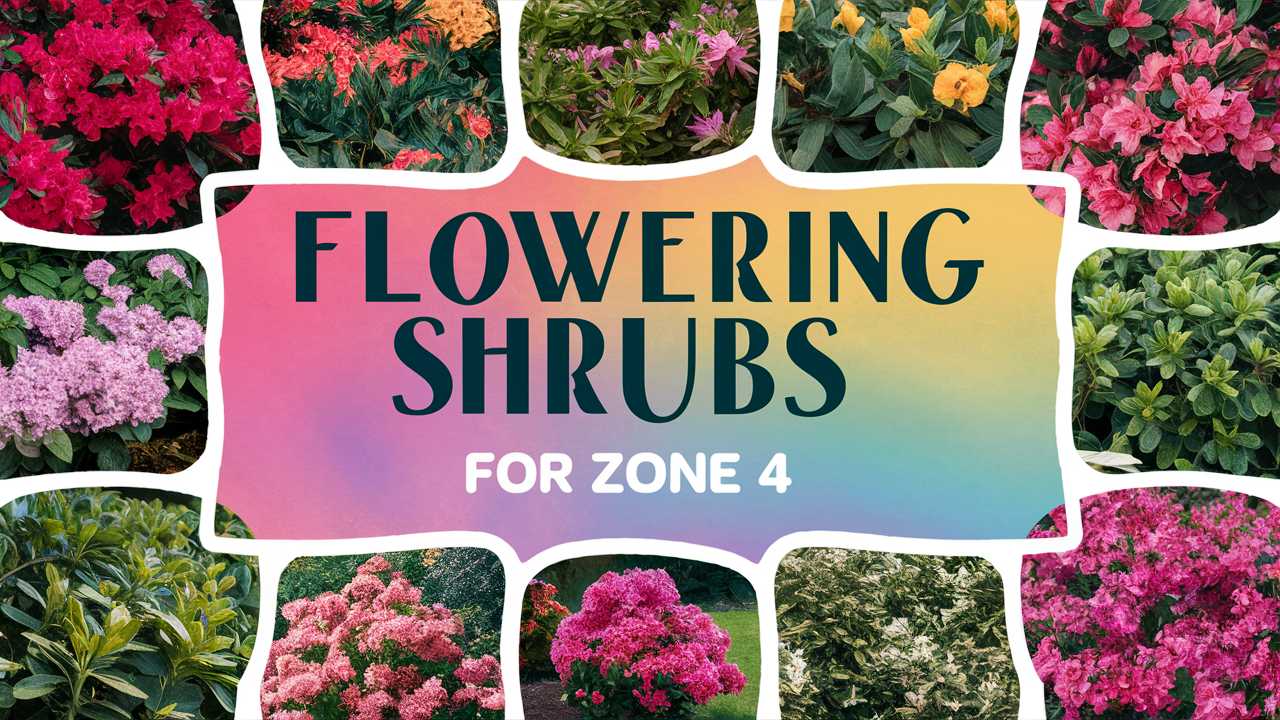Flowering Shrubs For Zone 4
Gardening within the confines of USDA hardiness Zone 4 can present some unique challenges, with colder winters that can dip down to -30°F (-34°C). However, this doesn’t mean you must sacrifice beauty in your yard or garden. In fact, many flowering shrubs thrive in this zone, adding color and interest throughout the growing season. In this blog post, we’ll explore 15 delightful flowering shrubs suitable for Zone 4, providing you with insight into their characteristics, growing conditions, and why they could be a fantastic addition to your landscape.
Clethra
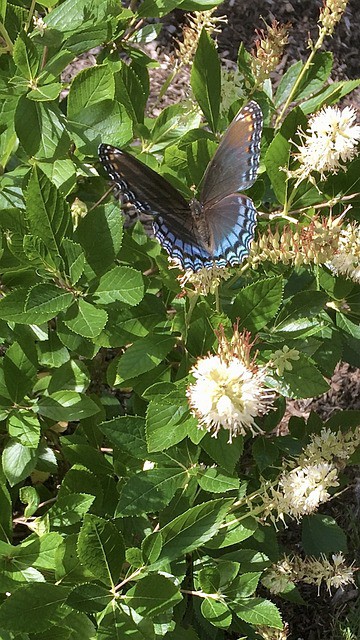
Clethra, commonly known as sweet pepperbush, is a delightful flowering shrub that thrives in moist, well-drained soils. With its fragrant white to pale pink blooms, which emerge in mid to late summer, Clethra attracts a multitude of pollinators such as bees and butterflies. Its scent resembles that of honey, making it a favorite among fragrance enthusiasts.
This deciduous shrub can grow to be about 3 to 8 feet tall, depending on the variety, and is most often found in habitats that offer partial shade, although it can also tolerate full sun with adequate moisture. Its glossy green leaves turn vibrant shades of yellow in the fall, lending an additional touch of beauty year-round. Overall, Clethra is a handsome option for gardeners looking to enhance biodiversity in their landscapes.
Smooth Hydrangea

Smooth Hydrangea (Hydrangea arborescens), like ‘Annabelle’, is a fabulous shrub for Zone 4 gardens. It boasts large, round clusters of white flowers that bloom in summer, providing a burst of color against lush green foliage. These blooms can be quite large—sometimes reaching up to a foot in diameter—and hold their shape well even after drying, making them attractive for winter arrangements.
This deciduous shrub is relatively easy to grow and thrives in well-drained soils with plenty of moisture. It can grow between 3 to 5 feet tall and often benefits from a good pruning in late winter to promote healthy new growth. Smooth Hydrangeas are perfect for a cottage garden style or can serve as focal points in more structured designs.
Panicle Hydrangea

For gardeners who desire dramatic blooms, Panicle Hydrangea (Hydrangea paniculata) offers a spectacular display. It produces upright cone-shaped flower clusters that appear in white and gradually transform to pinks and reds as the season progresses. Popular varieties like ‘Limelight’ are known for their large white blooms, making them an impressive centerpiece in any landscape.
Panicle Hydrangeas can grow up to 8 feet tall, making them ideal for creating privacy screens or backdrops in the garden. Unlike other hydrangea types, they are relatively tolerant of different soil types and can handle full sun to partial shade. Pruning is usually best done in late winter or early spring just before new growth begins.
Border Privet
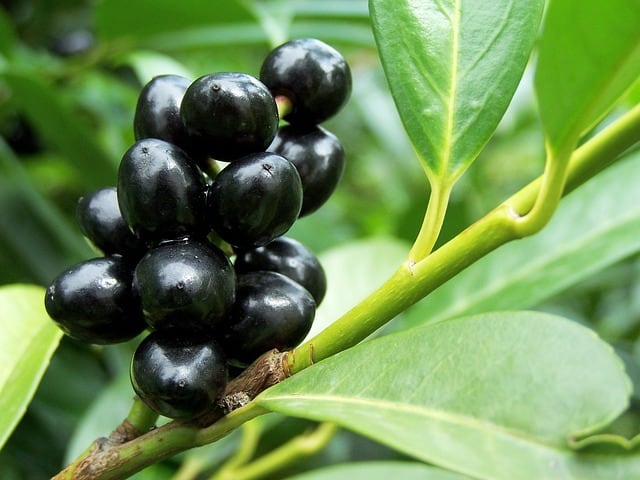
The Border Privet (Ligustrum obtusifolium) is an adaptable, fast-growing shrub known for its ability to maintain a neat appearance with minimal effort. It typically flowers in early summer, resulting in small white blossoms followed by dark purple-black berries that can attract birds. Though its flowers may not be the most showy, its appeal lies in its dense, lush foliage.
Growing to heights of 5 to 15 feet, Border Privet is often used as a hedge or for screening purposes, thanks to its fast growth and ability to be pruned easily. It does particularly well in full sun to partial shade and is tolerant of a range of soil types, making it a versatile choice for creating privacy in your outdoor space.
Northern Bayberry (Myrica pensylvanica)
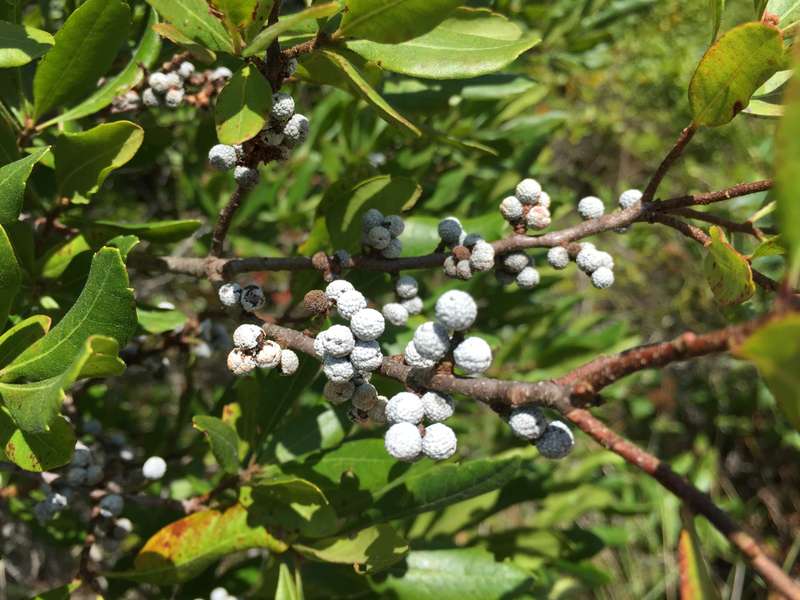
For an enigmatic flowering shrub, look no further than Northern Bayberry (Myrica pensylvanica). This native shrub offers more than just pretty flowers, featuring aromatic leaves and small grayish berries that are beloved by various wildlife, especially birds. It’s important to note that both male and female plants are required to produce those appealing berries, adding an interesting layer to your planting choices.
Typically growing between 6 to 12 feet tall, Northern Bayberry adapts well to sandy soils, making it perfect for coastal gardens or areas with poor soil. It prefers full sun and provides a unique texture throughout the growing season, with its evergreen leaves standing strong against harsh winters. Additionally, the leaves can be used to brew aromatic teas!
Sweet Mock Orange
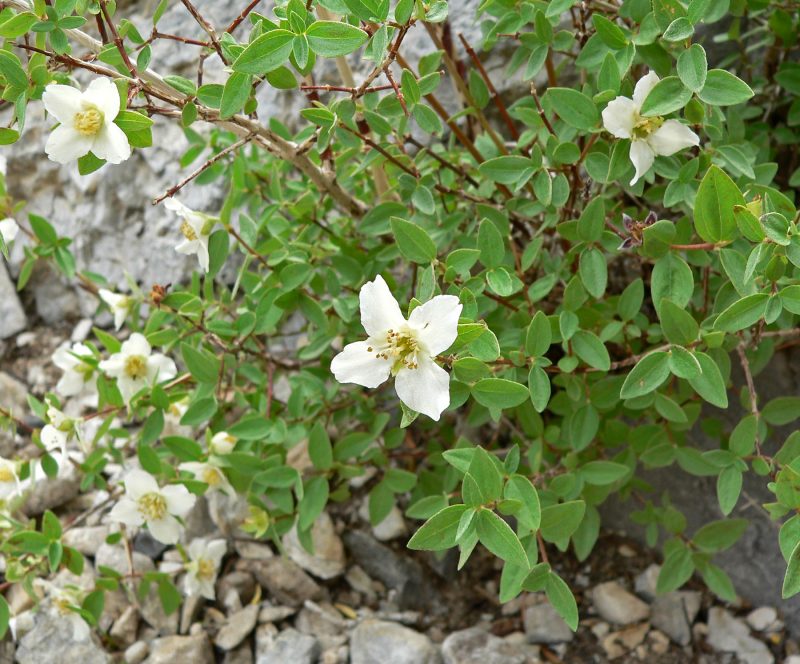
Sweet Mock Orange (Philadelphus coronarius) is renowned for its intoxicatingly fragrant flowers that tightly cluster together in late spring. Each bloom resembles that of a white jasmine flower, providing a citrusy aroma that can fill the garden. This shrub grows to between 6 and 10 feet tall and can be maintained in a more compact form through regular pruning.
This resilient shrub performs best in full sun and can adapt to various soil types as long as they are well-drained. It’s not just the fragrance that makes this shrub special; its ability to attract bees and butterflies transforms your outdoor space into a vibrant ecosystem. Sweet Mock Orange can work beautifully in mixed borders or as a standalone feature shrub.
Bush Cinquefoil
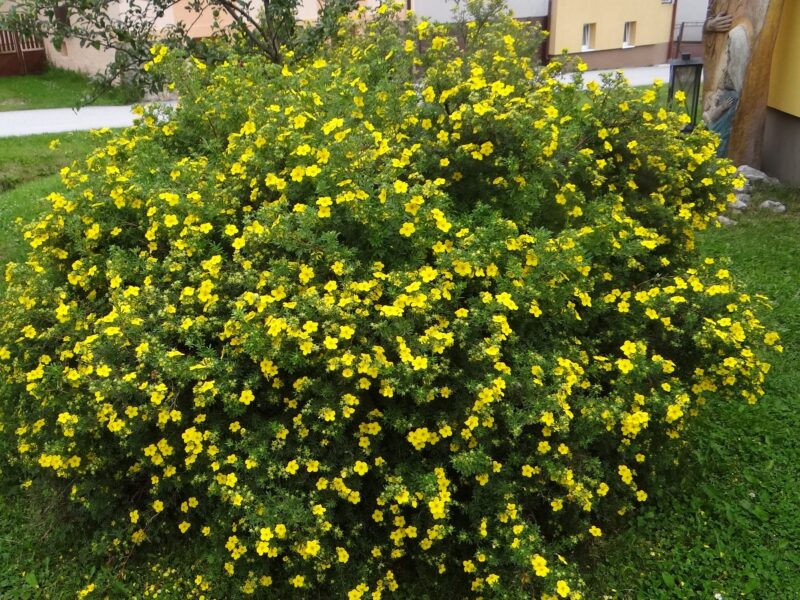
Bush Cinquefoil (Potentilla fruticosa) is a delightfully hardy shrub that features small, bright yellow flowers throughout the summer, providing cheerful color against its green, finely textured foliage. The blooms can vary from yellow to white, orange, or red depending on the specific variety you choose.
Growing between 2 to 4 feet tall, Bush Cinquefoil is particularly well-suited for rock gardens or sloped areas, as it’s tolerant of poor soils and drought conditions once established. Although it flourishes in full sun, it can manage in partial shade as well. The low maintenance nature of this shrub makes it a favored choice for gardeners looking for reliable blooms with minimal fuss.
Nanking Cherry
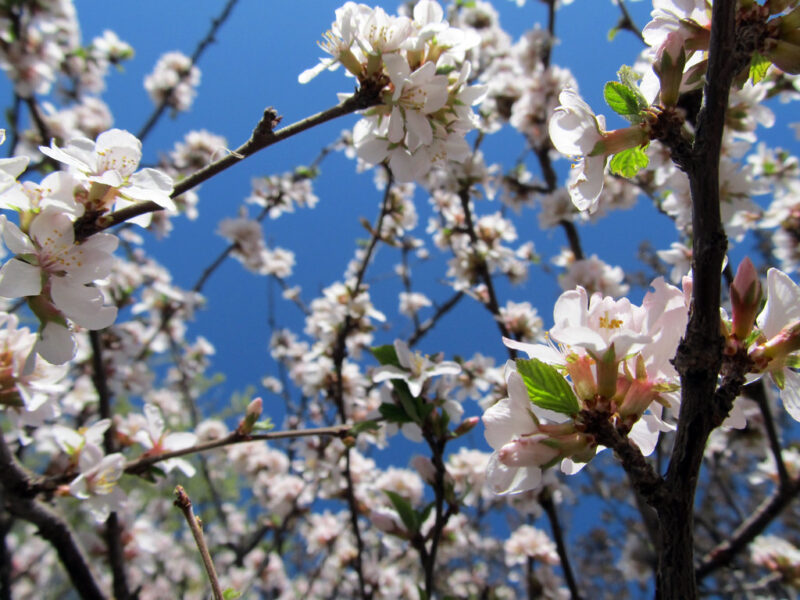
If you’re looking for a flowering shrub that also offers delicious fruit, Nanking Cherry (Prunus tomentosa) is a wonderful candidate. This deciduous shrub explodes into a halo of pink flowers in early spring, heralding the arrival of warmer days. Following the flowering phase, edible cherries appear, which are cherished for making jams and jellies.
Typically growing to about 4 to 6 feet tall, Nanking Cherry is adaptable and thrives in well-drained soils and full sun. Its resilience to pests and diseases makes it a favorite among those seeking easy-care shrubs with the added bonus of edible fruit. Plant it near a patio or walkway to enjoy its spring beauty and the tantalizing aroma of the cherries.
Rhododendron
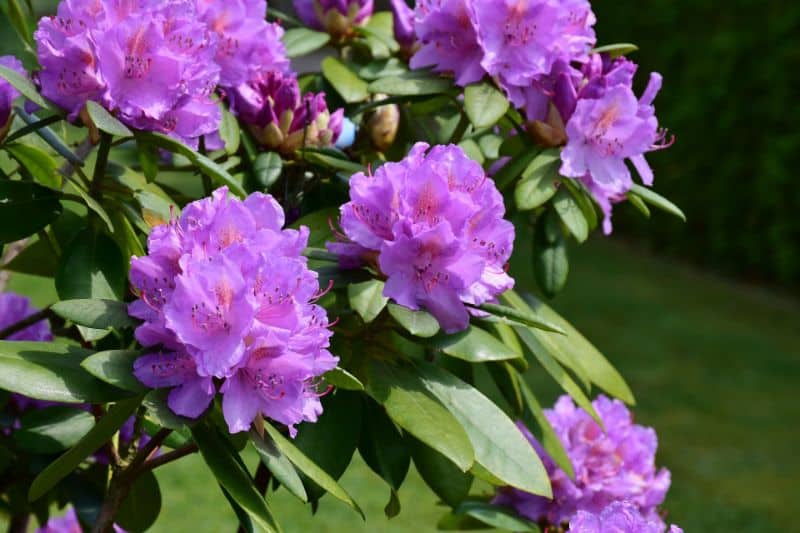
Rhododendrons are iconic flowering shrubs known for their lush foliage and stunning blooms. These shrubs often grace gardens with their large clusters of flowers that come in various hues, including vibrant purples, pinks, and whites. They typically bloom in spring, attracting pollinators and catching the eye of anyone who walks by.
While Rhododendrons generally prefer acidic soils and partial shade, many varieties are well-suited for Zone 4, with some being quite cold hardy. Their height ranges from 3 to 10 feet, offering versatility for different gardening needs. These beautiful shrubs can create dramatic focal points and provide a lush backdrop if planted in groups or as specimen plants.
Sargent’s Weeping Hemlock (Tsuga canadensis ‘Sargentii’)
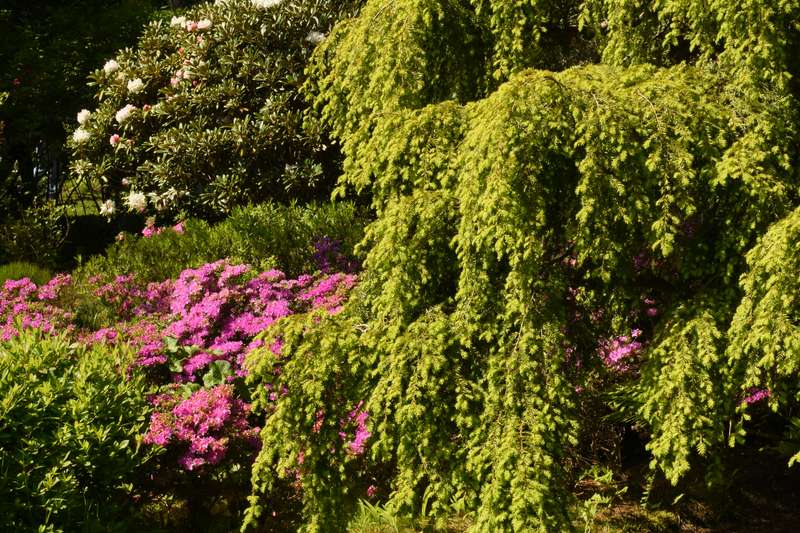
The Sargent’s Weeping Hemlock (Tsuga canadensis ‘Sargentii’) is a unique, charming shrub that brings an interesting texture and shape to any landscape. Its weeping form features delicate, cascading branches lined with soft needles, adding vertical interest to your garden. In late spring, tiny cones may appear, though they are often overshadowed by its graceful form.
This evergreen shrub, usually growing between 4 to 6 feet tall, thrives in shaded areas and moist, well-drained soils. Its ability to endure cold winters makes it a reliable candidate for enhancing your landscape’s structure and stability throughout the year. This shrub can be a wonderful addition in mixed borders or rock gardens, providing contrast against flowering perennials.
Yew

Yews (Taxus spp.) are popular, versatile evergreen shrubs that can be shaped to fit various landscape designs. Though often associated more with their dense, green foliage than with their flowers, yews can produce inconspicuous flowers that develop into red berries. These berries are not toxic and can provide additional interest for birds.
Yews grow well in various conditions, including full sun to shade, and adapt to many soil types. They range in height from low-growing ground covers to tall screening shrubs, making them handy for numerous uses in the landscape. With appropriate pruning in early spring, Yews can be shaped into neat hedges or left to grow in their natural form, providing year-round greenery.
Japanese Kerria

Japanese Kerria (Kerria japonica) is a charming flowering shrub characterized by its stunning yellow blooms that appear in early spring, often before the leaves fully emerge. These small, cup-shaped flowers bloom profusely along the stems, creating a spectacular visual display that brightens even the gloomiest spring day.
Typically growing to around 3 to 5 feet tall, Japanese Kerria does well in partial shade and will thrive in various soil types, although it prefers a moist, loamy environment. It also grows quite vigorously, so regular pruning can help maintain its shape and encourage healthy growth. This shrub can be a wonderful addition to mixed borders or even as a specimen plant, providing a lovely pop of yellow in your garden.
Redtwig Dogwood
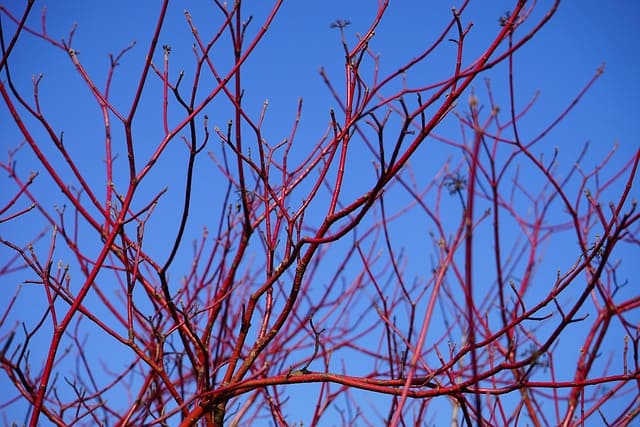
The Redtwig Dogwood, or Cornus sericea, is well-known for its vibrant red stems, which create a striking contrast against winter’s white snow. During the warmer months, this shrub showcases clusters of small white flowers in late spring, followed by white or blue berries that serve as food for birds. It’s a plant that truly shines year-round, offering interest throughout the seasons.
Typically growing between 3 to 9 feet tall, Redtwig Dogwood prefers moist soils, though it is notably adaptable and can withstand a variety of conditions. It thrives in full sun to partial shade and can be pruned back each spring to encourage new growth. This resilient shrub is perfect for structured landscapes or even as a natural hedge.
Burning Bush (Euonymus alatus)
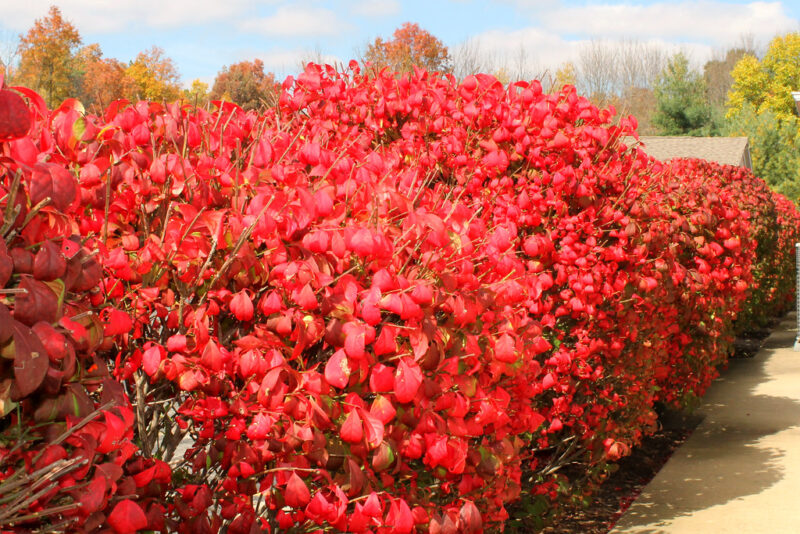
Burning Bush (Euonymus alatus) is famous for its stunning fall color, which transforms its foliage into brilliant shades of red. While its blossoms may not be the main event, small inconspicuous flowers appear in late summer, giving way to attractive seed capsules. This shrub typically reaches heights of 6 to 10 feet and can be pruned to maintain its shape.
Burning Bush thrives in various soil types as long as they are well-drained and prefers full sun to partial shade. Its remarkable fall display makes it a favorite in autumn landscapes, while the dense branching structure provides excellent privacy or shelter for wildlife. Just be mindful that it can be aggressive in some regions, so planning your planting is essential.


